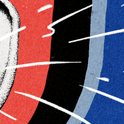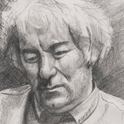“DEM” by Eddie Peake, performed at Cell Project Space, London: Peake is just one among dozens of artists involved with the Tate Tanks
In July, the first ever museum space dedicated to performance art and video installation opened in London. Carved out of the subterranean concrete bunkers that once stored oil for Bankside Power Station, Tate Modern’s “The Tanks” have a raw industrial aesthetic that fits a genre of art associated with underground venues.
“Genre” is perhaps a misleading term for a branch of art that has as many guises as there are ways of performing—dance, drama, poetry, music and ritual. But the phenomenon that originated with the anarchic antics of the Dadaists in Zurich’s Cabaret Voltaire during the first world war does have a distinguishing feature. Despite its internationalism—the term has been applied to artists from Asia to Europe to North America—performance art shares the language of protest.
So what happens when the subversive and ephemeral is given a permanent home in a public institution? We’re in the process of finding out. The Tanks’ inaugural season “Art in Action” (until 28th October) has been extraordinarily varied, ranging from a survey in which audience members were asked questions about politics and spirituality by practicing psychics, to a restaging of a 1973 performance by Juan Downey which uses video, CCTV and brain monitors to retell Plato’s philosophical allegory of the cave.
The 15-week programme has offered something for everyone; the only thing missing has been a sense of danger. However great The Tanks may look, they’re only underground in the physical sense, in the bowels of a public institution funded by the government. The Tate is obliged to play it safe. There will be none of the risqué rituals or sadomasochistic feats of endurance associated with the most outré performance art. No Stuart Brisley soaking in a bath full of rotting offal as at Kensington’s Gallery House in 1972, no Chris Burden having himself kicked downstairs as at the Basel Art Fair in 1975, no naked Marina Abramovic cutting her stomach with a razor and whipping herself into a frenzy before collapsing with exhaustion on a cross made of ice (a 1974 performance at the Guggenheim New York cut short at the request of the spectators). But without this edge of danger—and the resulting publicity—what is there in performance art to draw the crowds?
For the moment novelty, with rare flashes of real creativity. To view Cuban artist Tania Bruguera’s piece about global migration, visitors were made to wait in line while unsmiling black-clad officials wearing Tate badges operated a blatantly unfair queuing system, letting in people from the back of the queue ahead of others at the front. To ensure admittance, visitors could volunteer for a lie-detector test answering the standard questions asked at Immigration, but if caught lying you were not allowed in. When you did get in, all you saw was a worker in a mask welding a sign reading “ARBEIT MACHT FREI”—at which point it became clear that the queuing was the performance, and this was the punch-line. The experience was unnerving and chastening, and it worked by exploiting the institutional authority of the Tate.
It’s no accident that the two bravest performance pieces of the past 12 years—Michael Landy’s Break Down (in which he destroyed all his personal possessions) and Jeremy Deller’s The Battle of Orgreave (in which he recreated the pitched battle between striking Yorkshire miners and mounted police outside Orgreave in 1984)—were independently funded by art impresarios Artangel. But even an impresario would be pushed to fill a rolling programme of live art indefinitely, and curators are not impresarios. As I write, the Tate still hasn’t announced the follow-up to the Art in Action season.
Will the Tanks become a permanent feature of London’s art scene? My guess is that they’ll be kept going with a programme of film recordings and recreations of past performances—but this will be in direct contravention of the ethos of live art. On the weekend of 5th October The Tanks are hosting a conference to challenge the statement that “performance is the art of the present tense,” by considering how museums might tell the story of performance art’s past. For live audiences, though, live performances will remain more appealing. The past may be of interest to art historians, but the response of the public to a diet of repeat performances is liable to be “Thanks but no tanks.”












